Enhancing Island Energy Resilience: Optimized Networked Microgrids for Renewable Integration and Disaster Preparedness
Abstract
1. Introduction
2. Literature Review
2.1. Background on Networked Microgrids and Multi-Microgrid Clusters
2.2. Approaches to Modeling, Optimization, and Control
2.3. Demand Response and Shared Energy Storage
2.4. Resilience-Focused Studies in Multi-Microgrid Environments
2.5. Gaps in the Literature and Research Motivation
2.6. Summary and Literature Comparison
3. Methodological Framework for Resilient Networked Microgrids: Simulation, Optimization, and Operational Strategies
3.1. Overview of the Methodological Approach
3.2. Detailed Methodological Implementation
3.2.1. Data Acquisition and Preprocessing
Demand Data Gathering and Baseline Capacities
Symbolic Regression for Daily and Seasonal Demand Variations
Sector-Based Load Breakdown
3.2.2. Agent-Based Simulation Using AnyLogic
3.2.3. Optimization of Renewable Generation and Storage with HOMER Pro
3.2.4. Network Microgrid Configuration and Operational Strategies
Local Renewable Generation and Storage Expansion
Networked Microgrids for Power Sharing
Merit-Order Dispatch for Load Prioritization
Integration with Simulation and Optimization Models
3.2.5. Scenario Analysis and Key Assumptions
4. Case Study Setup and Context: Networked Microgrids in Indonesian Island Communities
4.1. Rationale for Site Selection
4.2. Overview of Island Groups and Regional Characteristics
4.3. Electricity Infrastructure and Resource Assessments
4.4. Load Profiles and Solar Irradiation Data
4.5. Integration with Simulation and Optimization Platforms
5. Scenario Design and Experimental Setup for Evaluating Microgrid Resilience
5.1. Scenario Approach
5.2. Identification of Best-Case and Worst-Case Disruption Weeks
5.3. Scenario Configuration and Structures
5.4. Experimental Setup and Key Parameters
6. Simulation Results and Analysis of Microgrid Performance
6.1. Optimal PV and Battery Capacities
6.2. Scenario-Based Demand-Supply Balance
6.2.1. Performance Under Current Conditions (Business as Usual)
6.2.2. Impact of Networked Microgrid Configuration
6.2.3. Effect of PV and Battery Expansion
6.3. Comparative Analysis of Scenario Outcomes
6.3.1. Unmet Demand and Load Coverage
6.3.2. Surplus Generation and Resource Utilization
7. Discussion
7.1. Comparative Insights on Renewable Integration and Storage
7.2. Effects of Networked Microgrid Operation and Resource Sharing
7.3. Alignment and Distinctions from Existing Literature
7.4. Novelty and Scientific Contributions
8. Conclusions
Author Contributions
Funding
Data Availability Statement
Conflicts of Interest
Abbreviations
| PV | Photovoltaic |
| MG | Microgrid |
| NMG | Networked Microgrid |
| DR | Demand Response |
| NPC | Net Present Cost |
| LCOE | Levelized Cost of Energy |
| CCHP | Combined Cooling, Heating, and Power |
| ADMM | Alternating Direction Method of Multipliers |
| MILP | Mixed-Integer Linear Programming |
| MIQP | Mixed-Integer Quadratic Programming |
| EMS | Energy Management System |
| DeePC | Data-enabled Predictive Control |
| VCG | Vickrey-Clarke-Groves |
| HFCVs | Hydrogen Fuel Cell Vehicles |
| ANFIS | Adaptive Neuro-Fuzzy Inference System |
| H∞ | H-infinity (robust control design) |
| MPC | Model Predictive Control |
| BESS | Battery Energy Storage System |
| H2 | Hydrogen (chemical symbol) |
| CCG | Column-and-Constraint Generation |
| PEM | Probabilistic Energy Management (commonly used in literature) |
| QARO | Quantile-based Adaptive Robust Optimization (inferred) |
| TRO | (TRO method—a robust optimization approach; specific full name not provided) |
| P2P | Peer-to-Peer |
| LFC | Load Frequency Control |
| VSM | Virtual Synchronous Machine |
| SPBO | (Modified SPBO—an optimization approach; full name not explicitly defined) |
| KKT | Karush-Kuhn-Tucker |
| ESOC | Energy Storage State-of-Charge |
| WOA-SOCP | Whale Optimization Algorithm—Second-Order Cone Programming |
References
- Yu, J.; Bao, S.; Li, S.; Wu, H.; Li, H. Robust Optimization of Multi-Microgrid Systems In Cchp Regions Considering Self-Built Shared Energy Storage Station. Taiyangneng Xuebao/Acta Energiae Solaris Sin. 2025, 46, 503–513. [Google Scholar] [CrossRef]
- Zhang, H.; Wang, X.; Li, Y.; Li, J. Distributed Robust Optimization of Multi-Energy Microgrid Clusters. In Proceedings of the 2024 4th International Conference on Energy Engineering and Power Systems (EEPS), Hangzhou, China, 9–11 August 2024; pp. 472–477. [Google Scholar]
- Ji, S.; Liu, Y.; Wu, S.; Li, X. Resilience Improvement of Microgrid Cluster Systems Based on Two-Stage Robust Optimization. Energies 2024, 17, 4287. [Google Scholar] [CrossRef]
- Shi, Z.; Zhang, T.; Liu, Y.; Feng, Y.; Wang, R.; Huang, S. Energy management of multi-microgrid system with renewable energy using data-driven distributionally robust optimization. Int. J. Green Energy 2024, 21, 2699–2711. [Google Scholar] [CrossRef]
- Wang, H.; Tang, T.; Wang, W.; Zhang, Y.; Tang, Y.; Sun, F. Distributed Voltage and Frequency Cooperative Control for Isolated Microgrid Cluster Based on Adaptive Artificial Neural Network. J. Power Supply 2023, 21, 105–114. [Google Scholar] [CrossRef]
- Ediriweera, W.E.P.S.; Lidula, N.W.A. Adaptive Load Shedding Technique for Energy Management in Networked Microgrids. In Proceedings of the 2023 IEEE 17th International Conference on Industrial and Information Systems (ICIIS), Peradeniya, Sri Lanka, 25–26 August 2023; pp. 465–470. [Google Scholar]
- Xu, Y.; Zhang, S.; Zhang, T.; Wang, L.; Mi, L. Multi-microgrid-prosumer Group Adaptive Robust Distributed Collaborative Optimization Based on Triple Game. Dianwang Jishu/Power Syst. Technol. 2024, 48, 4143–4156. [Google Scholar] [CrossRef]
- Chen, Z.; Fan, F.; Tai, N.; Hu, Y.; Li, R. Coordinated Energy Dispatch and Flexibility Support for Microgrid Cluster Using Rule-Based Stackelberg Gaming Approach. IEEE Trans. Ind. Appl. 2024, 60, 1564–1575. [Google Scholar] [CrossRef]
- Ghadimi, M.; Moghaddas-Tafreshi, S.M. Enhancing the economic performance and resilience in a multi-area multi-microgrid system by a decentralized operation model. Electr. Power Syst. Res. 2023, 224, 109692. [Google Scholar] [CrossRef]
- Wu, N.; Wang, Z.; Li, X.; Lei, L.; Qiao, Y.; Linghu, J.; Huang, J. Research on real-time coordinated optimization scheduling control strategy with supply-side flexibility in multi-microgrid energy systems. Renew. Energy 2025, 238, 121976. [Google Scholar] [CrossRef]
- Tan, S.; Xie, P.; Guerrero, J.M.; Vasquez, J.C.; Alcala, J.M.; Carreno, J.E.M.; Guerrero-Zapata, M. Lyapunov-Based Resilient Cooperative Control for DC Microgrid Clusters Against False Data Injection Cyber-Attacks. IEEE Trans. Smart Grid 2024, 15, 3208–3222. [Google Scholar] [CrossRef]
- Schneider, K.P.; Sun, X.; Tuffner, F.K. Adaptive Load Shedding as Part of Primary Frequency Response to Support Networked Microgrid Operations. IEEE Trans. Power Syst. 2023, 39, 287–298. [Google Scholar] [CrossRef]
- Liu, Y.; Dou, Z.; Wang, Z.; Guo, J.; Zhao, J.; Yin, W. Optimal Configuration of Electricity-Heat Integrated Energy Storage Supplier and Multi-Microgrid System Scheduling Strategy Considering Demand Response. Energies 2024, 17, 5436. [Google Scholar] [CrossRef]
- Aly, M.; Mohamed, E.A.; Ahmed, E.M. Boosting Frequency Stability in Multi-Microgrid Systems with an Innovative Dual-Hybrid Fractional Control Scheme Integrating Demand Response. IEEE Access 2024, 12, 175304–175327. [Google Scholar] [CrossRef]
- Zhang, H.; Wang, X.; Li, Y.; Li, J. Optimal Strategy of Multi-microgrid System Stackelberg Game Operation Considering Photovoltaic Consumption and Integrated Demand Response. In Proceedings of the 2024 IEEE International Conference on Energy Internet (ICEI), Zhuhai, China, 1–3 November 2024; pp. 472–477. [Google Scholar]
- Qin, D.; Wang, C.; Liu, Y.; Wu, R.; Hou, D.; Huang, W.; Chen, L. Consensus-Based Coordinated Control of Flexible Interconnected DC Microgrid Clusters. Energies 2024, 17, 43. [Google Scholar] [CrossRef]
- Alamir, N.; Kamel, S.; Jurado, F.; Abdelkader, S.M. Stochastic Energy Management Framework for Multi-Microgrid with Demand Response and Battery Storage. In Proceedings of the 2024 International Conference on Artificial Intelligence, Computer, Data Sciences and Applications (ACDSA), Victoria, Seychelles, 1–2 February 2024; pp. 1–6. [Google Scholar]
- Weslie, S.K.S.; Saifuddin, M.R.; Panda, G.; Naayagi, R.T. Microgrid in Grid-Tied and Islanded Mode: Asset Configuration and Operating Cost Optimization. In Sustainable Energy and Technological Advancements; Springer Nature: Singapore, 2023; pp. 171–181. [Google Scholar]
- Shufian, A.; Hoque, M.J.-A.-M.; Kabir, S.; Mohammad, N. Optimized Performance and Economic Assessment for Hybrid Island Microgrid System Considering Uncertainties. Technol. Econ. Smart Grids Sustain. Energy 2022, 7, 32. [Google Scholar] [CrossRef]
- Moazzen, F.; Hossain, M.J. A two-layer strategy for sustainable energy management of microgrid clusters with embedded energy storage system and demand-side flexibility provision. Appl. Energy 2025, 377, 124659. [Google Scholar] [CrossRef]
- Zhao, J.; Tao, L.; Zhao, W.; Sun, H. Optimization of Shared Energy Storage Capacity for Multi-microgrid Operation with Flexible Loads and Economic Dispatch. In World Hydrogen Technology Convention; Springer Proceedings in Physics; Springer Nature: Singapore, 2023; Volume 394, pp. 63–80. [Google Scholar]
- Yu, W.; Tang, Z.; Xiong, W. Distributed robust data-enabled predictive control based voltage control for networked microgrid system. Electr. Power Syst. Res. 2024, 231, 110360. [Google Scholar] [CrossRef]
- Yassim, H.M.; Abdullah, M.N.; Gan, C.K.; Ahmed, A.; Tee, W.H.; Azmi, A. Hierarchical Energy Management Strategy for an Islanded Networked Microgrid Considering Flexible Inter-Microgrid Power Exchange. In Proceedings of the 2024 IEEE Sustainable Power and Energy Conference (iSPEC), Kuching, Sarawak, Malaysia, 24–27 November 2024; pp. 1–6. [Google Scholar]
- Wang, M.; Xu, Y.; Dong, H.; Xiang, Y.; Fan, W. Scheduling optimization of multi-microgrid cooperative alliance considering demand response. Electr. Meas. Instrum. 2024, 61, 157–164. [Google Scholar]
- Sun, H.; Zou, H.; Jia, J.; Shen, Q.; Duan, Z.; Tang, X. Master–Slave Game Optimization Scheduling of Multi-Microgrid Integrated Energy System Considering Comprehensive Demand Response and Wind and Storage Combination. Energies 2024, 17, 5762. [Google Scholar] [CrossRef]
- Siqin, T.; He, S.; Hu, B.; Fan, X. Shared energy storage-multi-microgrid operation strategy based on multi-stage robust optimization. J. Energy Storage 2024, 97, 112785. [Google Scholar] [CrossRef]
- Seyednouri, S.R.; Safari, A.; Quteishat, A.; Younis, M.A.; Salehi, J.; Najafi, S.; Taghizadegan, N. Stochastic energy management of a multi-microgrid system with battery/supercapacitor energy storages considering demand response and transactive energy. Renew. Energy Focus 2024, 48, 100531. [Google Scholar] [CrossRef]
- Oh, B.C.; Son, Y.G.; Zhao, D.; Singh, C.; Kim, S.Y. A Bi-Level Approach for Networked Microgrid Planning Considering Multiple Contingencies and Resilience. IEEE Trans. Power Syst. 2024, 39, 5620–5630. [Google Scholar] [CrossRef]
- Meng, X.; You, Z.; Zhang, M.; Shao, B. Distributed Hierarchical Cooperative Control and Stability Analysis of Flexible Interconnected Microgrid Cluster Via Back-to-Back Converters. Diangong Jishu Xuebao/Trans. China Electrotech. Soc. 2024, 39, 7917–7932. [Google Scholar] [CrossRef]
- Wang, Z.; Zhao, Y.; Wang, J.; He, S.; Tang, W. Optimization strategy for load demand response of microgrid clusters based on improved artificial hummingbird algorithm. J. Phys. Conf. Ser. 2024, 2896, 012070. [Google Scholar] [CrossRef]
- Li, H.; Han, Y. Data-driven distributionally robust collaborative optimization operation strategy for a multi-microgrid based on LSTM-CGAN. Dianli Xitong Baohu Yu Kongzhi/Power Syst. Prot. Control 2024, 52, 133–148. [Google Scholar] [CrossRef]
- Huang, D.; Lü, J.; Shi, S.; Li, Y.; Fu, W.; Wang, X. Optimal operation of island microgrid clusters considering demand response. Dianli Xitong Baohu Yu Kongzhi/Power Syst. Prot. Control 2024, 52, 88–98. [Google Scholar] [CrossRef]
- Deng, P.; Qian, J.; Zhang, R.; Wu, Q.; Shi, Y. Optimization Scheduling for Microgrid Clusters: A Robust Game Theory-Based Method with Shared Energy Storage. In Proceedings of the 2024 7th International Conference on Energy, Electrical and Power Engineering (CEEPE), Yangzhou, China, 26–28 April 2024. [Google Scholar]
- Ge, H.; Zhu, Y.; Zhong, J.; Wu, L. Day-ahead optimization for smart energy management of multi-microgrid using a stochastic-robust model. Energy 2024, 313, 133840. [Google Scholar] [CrossRef]
- Chen, C.; Xie, S.; Zhang, Y.; Wu, Q. Pricing strategy of distributed multi-microgrid distribution system considering flexible resource. Dianli Zidonghua Shebei/Electr. Power Autom. Equip. 2024, 44, 116–123. [Google Scholar] [CrossRef]
- Alamir, N.; Kamel, S.; Hashim, F.A.; Bouaouda, A.; Safaraliev, M.; Abdelkader, S.M. Optimizing Two-stage Energy Management in renewable-based Multi-Microgrid using a Modified Student Psychology-Based Optimization with Demand Response and Hydrogen Storage. Int. J. Hydrogen Energy 2024, 63, 696–719. [Google Scholar] [CrossRef]
- Alamir, N.; Kamel, S.; Abdelkader, S.M.; Jurado, F. Probabilistic Energy Management of Multi-Microgrid Considering Demand Response and Energy Storage System. In Proceedings of the 2024 4th International Conference on Electrical, Computer, Communications and Mechatronics Engineering (ICECCME), Male, Maldives, 4–6 November 2024; pp. 1–6. [Google Scholar]
- Sun, K.; Chen, W.; Chen, J.; Yin, W. A resilience enhancement strategy for multi-microgrid in extreme scenarios based on electric vehicles. Dianli Xitong Baohu Yu Kongzhi/Power Syst. Prot. Control 2023, 51, 53–65. [Google Scholar] [CrossRef]
- Shi, Z.; Zhang, T.; Liu, Y.; Feng, Y.; Wang, R.; Huang, S. Optimal design and operation of islanded multi-microgrid system with distributionally robust optimization. Electr. Power Syst. Res. 2023, 221, 109437. [Google Scholar] [CrossRef]
- Liu, R.; Liu, Y.; Xu, L.; Li, Z.; Li, X. Multi-microgrid System Collaborative Optimization Strategy Considering Distributed Demand Response. Dianli Jianshe/Electr. Power Constr. 2023, 44, 72–83. [Google Scholar] [CrossRef]
- Rao, S.; Kumar, Y.V.P.; Amir, M.; Ahmad, F. An Adaptive Neuro-Fuzzy Control Strategy for Improved Power Quality in Multi-Microgrid Clusters. IEEE Access 2022, 10, 128007–128021. [Google Scholar] [CrossRef]
- Afzal, M.Z.; Aurangzeb, M.; Iqbal, S.; Rehman, A.U.; Kotb, H.; AboRas, K.M.; Elgamli, E.; Shouran, M. A Resilience-Oriented Bidirectional ANFIS Framework for Networked Microgrid Management. Processes 2022, 10, 2724. [Google Scholar] [CrossRef]
- Li, Z.; Shahidehpour, M.; Nassif, A.B.; Kushner, D.; Paaso, A.; Bahramirad, S. Networked Microgrid Design and Operation for Enhancing the Grid Resilience in Extreme Conditions. In Proceedings of the 2023 IEEE Power & Energy Society General Meeting (PESGM), Orlando, OL, USA, 16–20 July 2023; pp. 1–5. [Google Scholar]
- Li, X.; Wang, M. Robust Optimal Scheduling of Multi-microgrid and Bidding Strategy of VCG Mechanism Considering Renewable Energy-load Uncertainty. Dianwang Jishu/Power Syst. Technol. 2023, 47, 2330–2343. [Google Scholar] [CrossRef]
- Karimi, H.; Jadid, S. A collaborative hierarchal optimization framework for sustainable multi-microgrid systems considering generation and demand-side flexibilities. Sustain. Energy Grids Netw. 2023, 35, 101087. [Google Scholar] [CrossRef]
- Gao, J.; Shao, Z.; Chen, F.; Chen, Y.; Lin, Y.; Deng, H. Distributed robust operation strategy of multi-microgrid based on peer-to-peer multi-energy trading. IET Energy Syst. Integr. 2023, 5, 376–392. [Google Scholar] [CrossRef]
- Feng, F.; Xin, D. Robust Optimization for Energy Transactions in Microgrid Cluster (MC) Considering Electric Vehicle (EV). In Proceedings of the 2023 International Conference on Power Energy Systems and Applications, ICoPESA 2023, Nanjing, China, 24–26 February 2023; pp. 312–321. [Google Scholar]
- Feng, F.; Du, X.; Si, Q.; Cai, H. Operation optimization of distributed multi-energy multi-microgrid considering system robustness. Energy Explor. Exploit. 2023, 41, 1085–1106. [Google Scholar] [CrossRef]
- Chen, Y.; Chen, J.; Zhang, Y. Adjustable Robust Optimal Dispatch of Microgrid Cluster with SESS Considering Uncertain Renewable Energy and Load. In Proceedings of the Lecture Notes in Electrical Engineering; Springer Nature: Singapore, 2022; pp. 322–332. [Google Scholar]
- Wu, Q.; Xie, Z.; Ren, H.; Li, Q.; Yang, Y. Optimal trading strategies for multi-energy microgrid cluster considering demand response under different trading modes: A comparison study. Energy 2022, 254, 124448. [Google Scholar] [CrossRef]
- Shaker, A.; Bozorg, M.; Safari, A.; Najafi-Ravadanegh, S. An Adaptive Emergency Approach for Hybrid Networked Microgrids Resilience. IEEE Access 2022, 10, 103164–103175. [Google Scholar] [CrossRef]
- Jena, S.; Padhy, N.P.; Srivastava, A. Resilient Economical Operation of DC Microgrid Clusters with Heterogeneous Sources. In Proceedings of the 2022 IEEE 10th Power India International Conference, PIICON, New Delhi, India, 25–27 November 2022. [Google Scholar]
- Jena, S.; Padhy, N.P.; Guerrero, J.M. Cyber-Resilient Cooperative Control of DC Microgrid Clusters. IEEE Syst. J. 2022, 16, 1996–2007. [Google Scholar] [CrossRef]
- Ali, A.Y.; Hussain, A.; Baek, J.W.; Kim, H.M. Optimal Operation of Networked Microgrids for Enhancing Resilience Using Mobile Electric Vehicles. Energies 2021, 14, 142. [Google Scholar] [CrossRef]
- Kavousi-Fard, A.; Wang, M.; Su, W. Stochastic Resilient Post-Hurricane Power System Recovery Based on Mobile Emergency Resources and Reconfigurable Networked Microgrids. IEEE Access 2018, 6, 72311–72326. [Google Scholar] [CrossRef]
- Ghodsi, M.R.; Tavakoli, A.; Samanfar, A. A Robust Controller Design for Load Frequency Control in Islanded Microgrid Clusters. Int. Trans. Electr. Energy Syst. 2022, 2022, 4218067. [Google Scholar] [CrossRef]
- Chen, Z.; Tai, N.; Hu, Y.; Li, R. Flexibility Auxiliary Service of Microgrid Cluster Based on Stackelberg Electricity Price Optimization. In Proceedings of the I and CPS Asia 2022-2022 IEEE IAS Industrial and Commercial Power System Asia, Shanghai, China, 8–11 July 2022; pp. 1674–1679. [Google Scholar]
- Zhang, Y.; Yang, H.; Wang, P. The Voltage Stabilizing Control Strategy of Off-Grid Microgrid Cluster Bus Based on Adaptive Genetic Fuzzy Double Closed-Loop Control. J. Electr. Comput. Eng. 2021, 2021, 5515362. [Google Scholar] [CrossRef]
- Shaker, A.; Safari, A.; Shahidehpour, M. Reactive Power Management for Networked Microgrid Resilience in Extreme Conditions. IEEE Trans. Smart Grid 2021, 12, 3940–3953. [Google Scholar] [CrossRef]
- Lai, J.; Lu, X.; Wang, F. Bilevel Information-Aware Distributed Resilient Control for Heterogeneous Microgrid Clusters. IEEE Trans. Ind. Appl. 2021, 57, 2014–2022. [Google Scholar] [CrossRef]
- Hu, W.; Wu, Z.; Lv, X.; Dinavahi, V. Robust Secondary Frequency Control for Virtual Synchronous Machine-Based Microgrid Cluster Using Equivalent Modeling. IEEE Trans. Smart Grid 2021, 12, 2879–2889. [Google Scholar] [CrossRef]
- Wikipedia. Salawati. Available online: https://en.wikipedia.org/wiki/Salawati (accessed on 23 October 2024).
- Wikipedia. Raja Ampat Islands. Available online: https://en.wikipedia.org/wiki/Raja_Ampat_Islands (accessed on 8 April 2024).
- Bawan, E.K.; Al Hasibi, R.A. The role of renewable energy resources in generation expansion planning and GHG emission reduction: A case study of West Papua. In Proceedings of the 4th International Conference on Sustainable Innovation 2020–Technology, Engineering and Agriculture (ICoSITEA 2020), Yogyakarta, Indonesia, 13–14 October 2020. [Google Scholar]
- Putranto, L.M.; Budi, R.F.S.; Novitasari, D. Generation expansion planning with a renewable energy target and interconnection option: A case study of the Sulawesi region, Indonesia. Renew. Sustain. Energy Rev. 2023, 183, 113489. [Google Scholar] [CrossRef]
- Novitasari, D.; Sarjiya; Hadi, S.P.; Budiarto, R.; Budi, R.F.S. Climate Changes Impact on Solar Photovoltaic in Tropical Islands, Case Study: Sulawesi Island. In Proceedings of the 2024 International Conference on Technology and Policy in Energy and Electric Power (ICTPEP), Bali, Indonesia, 3–5 September 2024; pp. 291–296. [Google Scholar]
- Kuswanto, H.; Hibatullah, F.; Soedjono, E.S. Perception of weather and seasonal drought forecasts and its impact on livelihood in East Nusa Tenggara, Indonesia. Heliyon 2019, 5, e02360. [Google Scholar] [CrossRef]
- Sambodo, M.T.; Fuady, A.H.; Negara, S.D.; Handoyo, F.W.; Mychelisda, E. Electricity Access and Community Welfare in Indonesia; Springer: Berlin/Heidelberg, Germany, 2021. [Google Scholar]
- Ilmi, M.M.; Maryanti, E.; Nurdini, N.; Setiawan, P.; Kadja, G.T.M.; Ismunandar. A multianalytical investigation of the physicochemical properties of white rock art pigments at the Nali and Tene Koro sites, Lembata, East Nusa Tenggara, Indonesia. J. Archaeol. Sci. Rep. 2022, 41, 103326. [Google Scholar] [CrossRef]

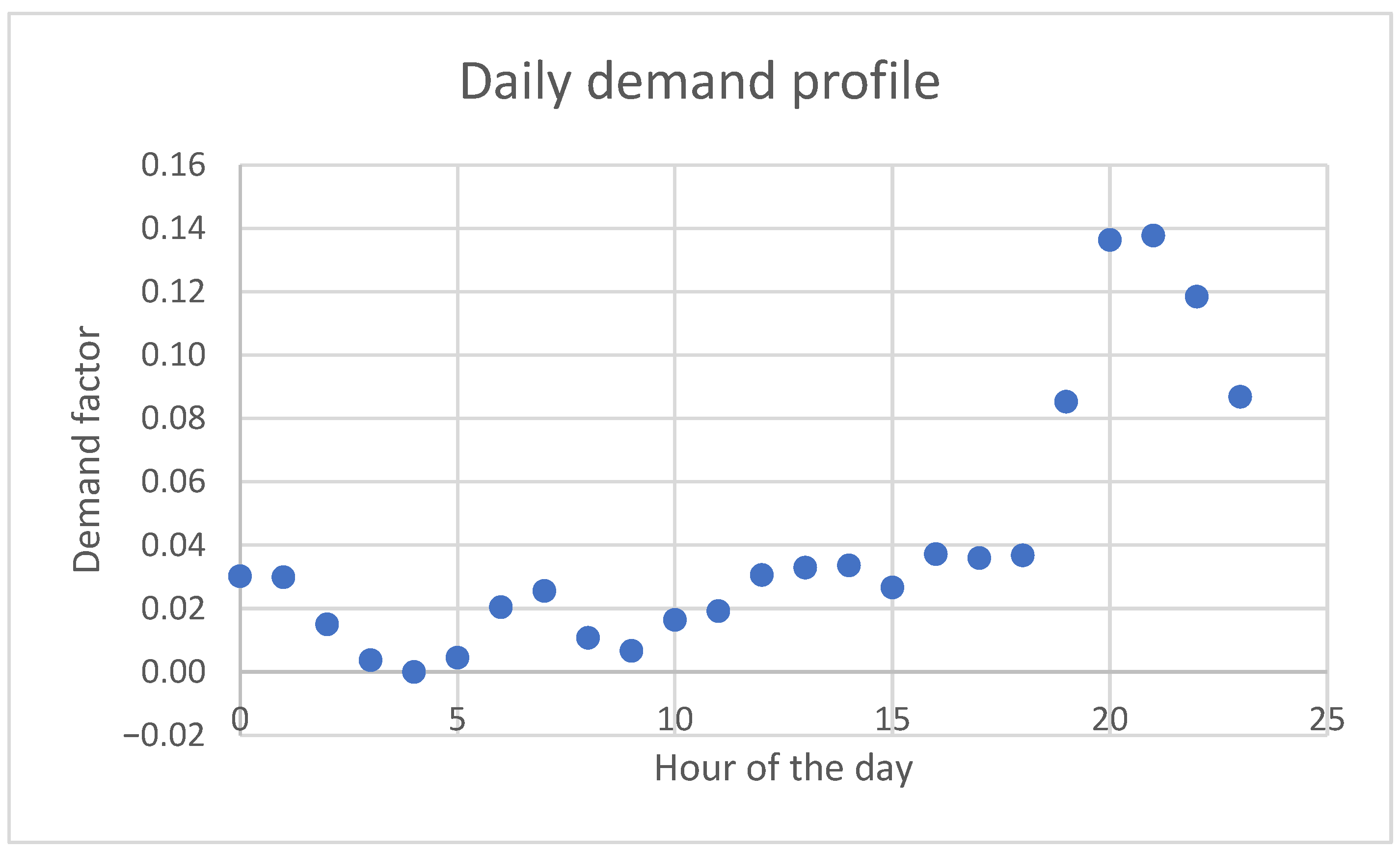
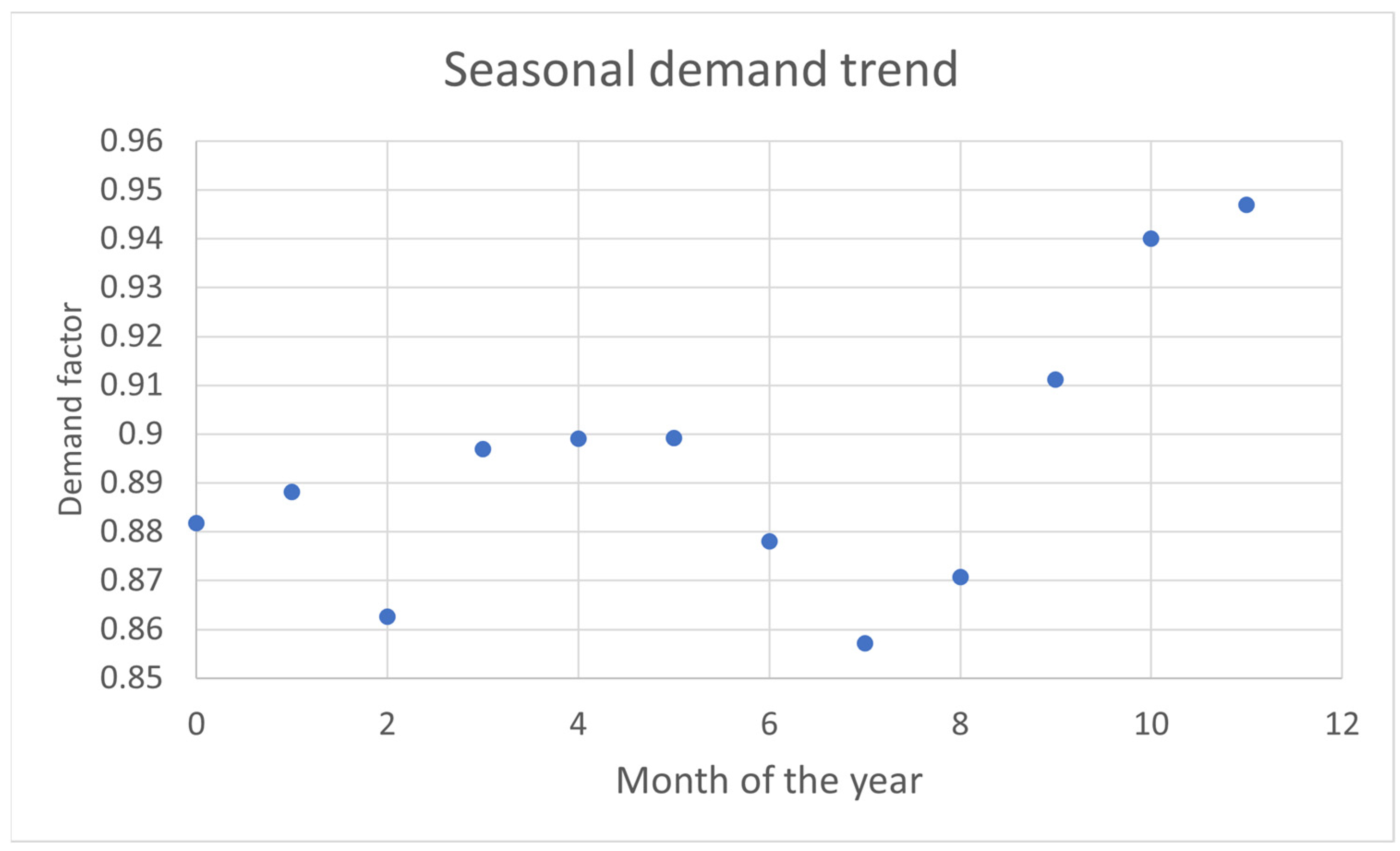
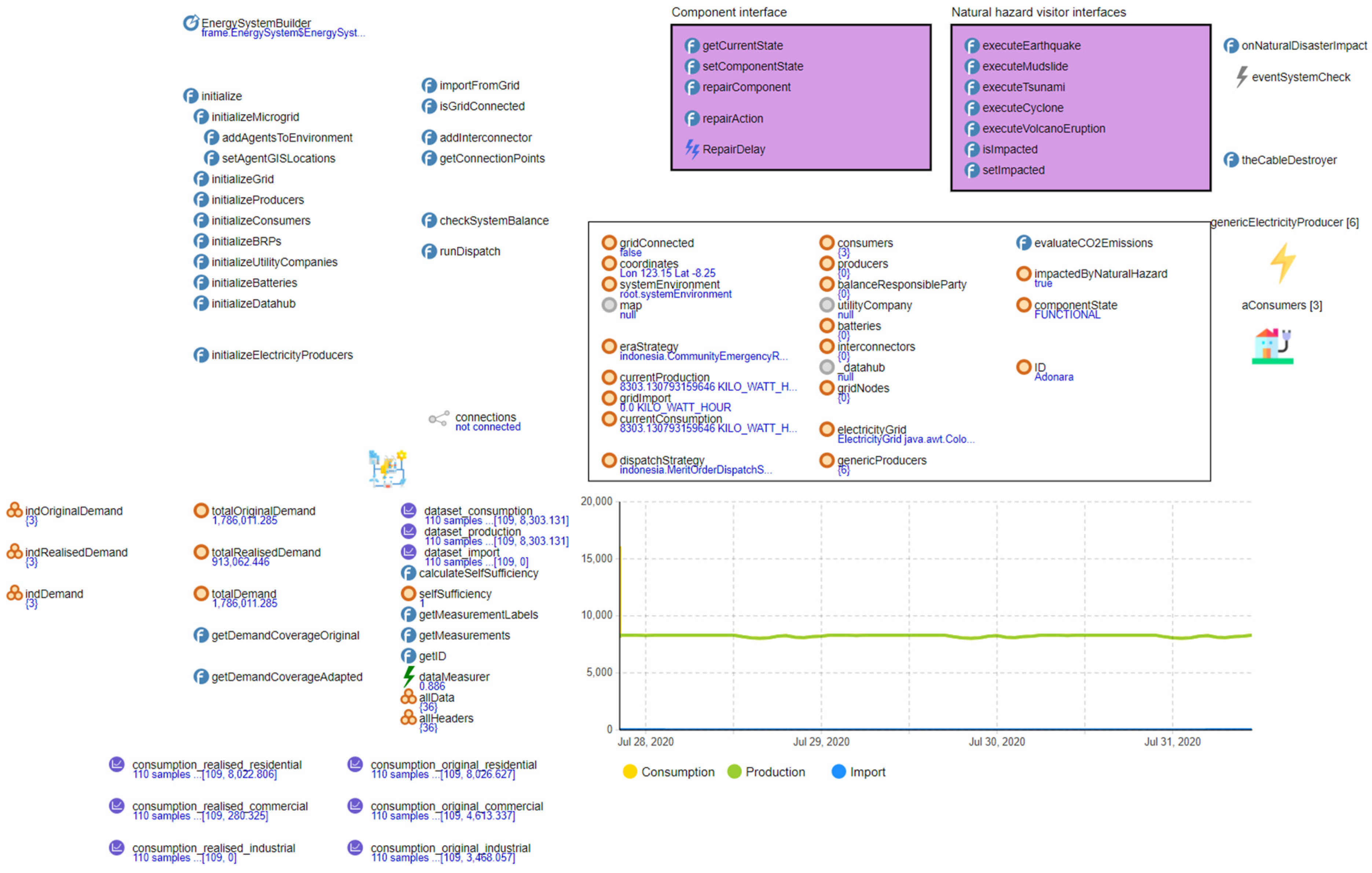

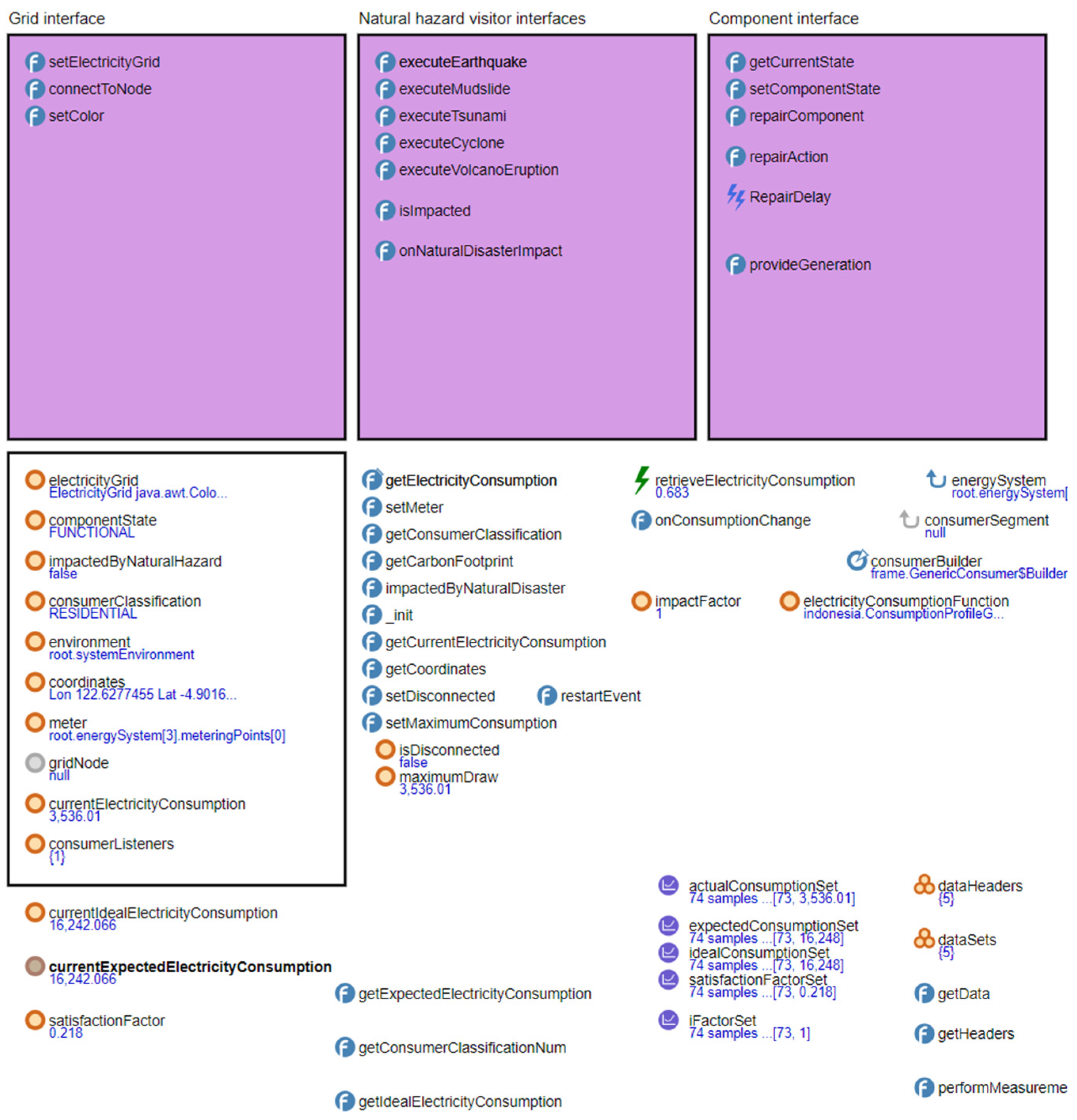

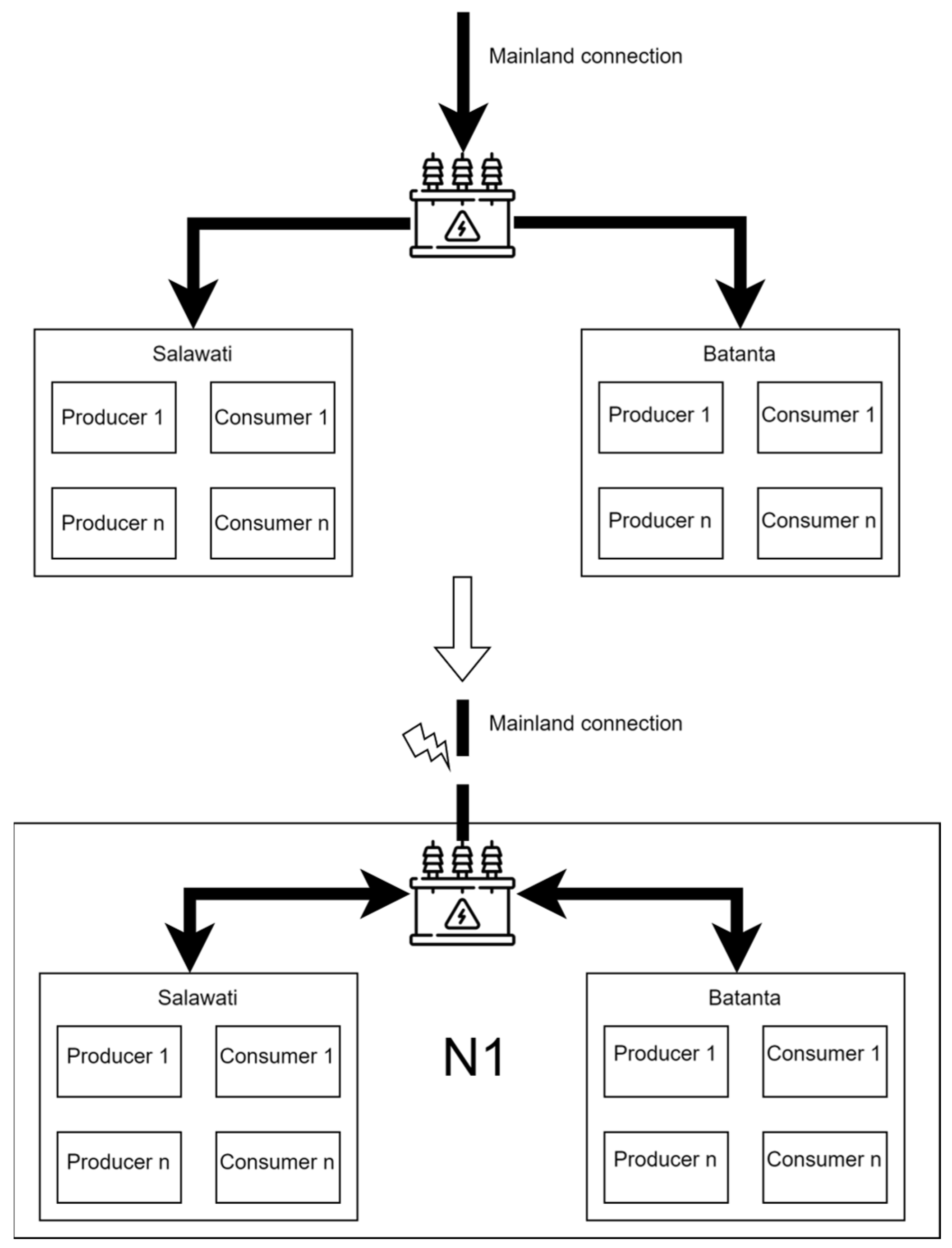


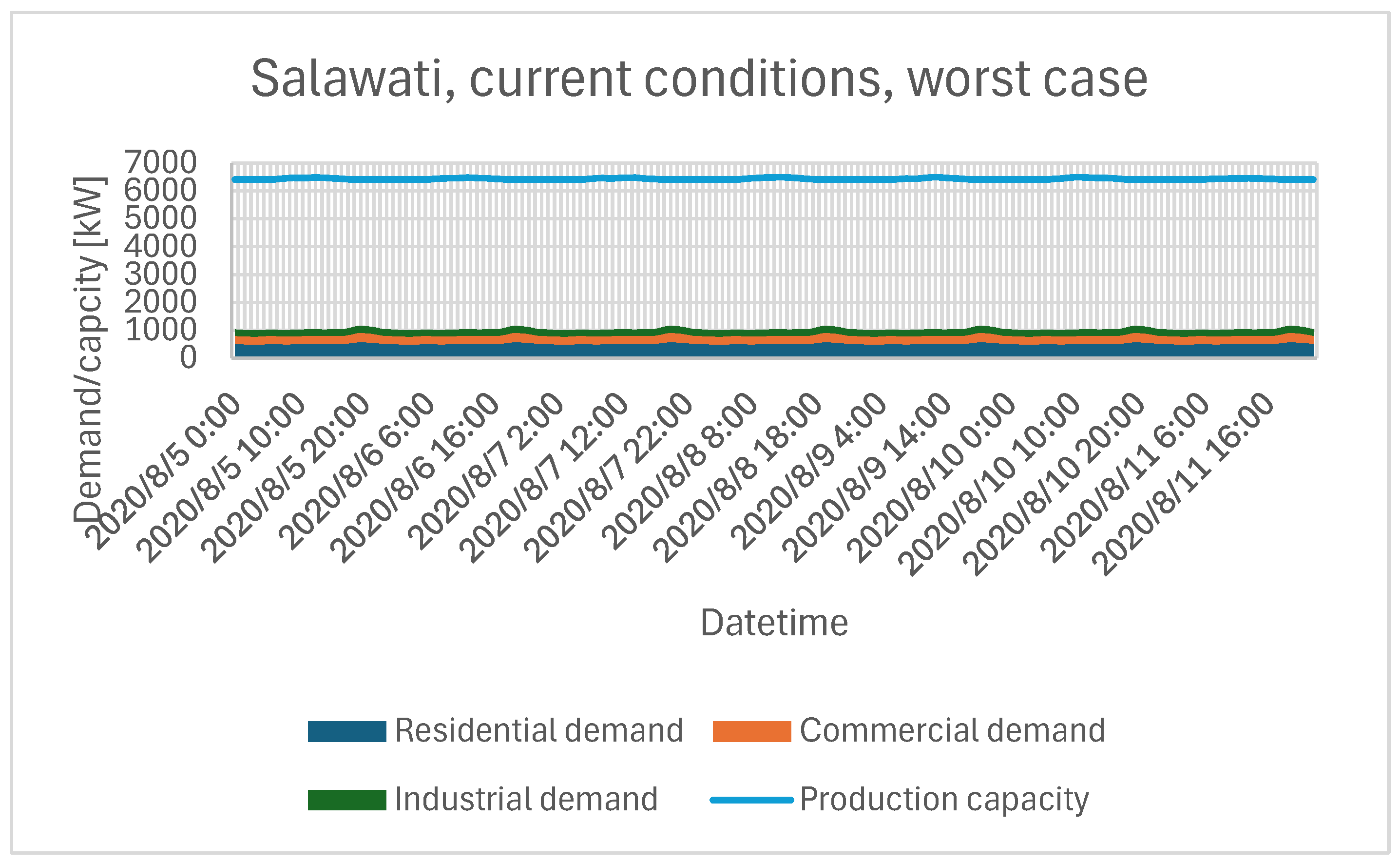
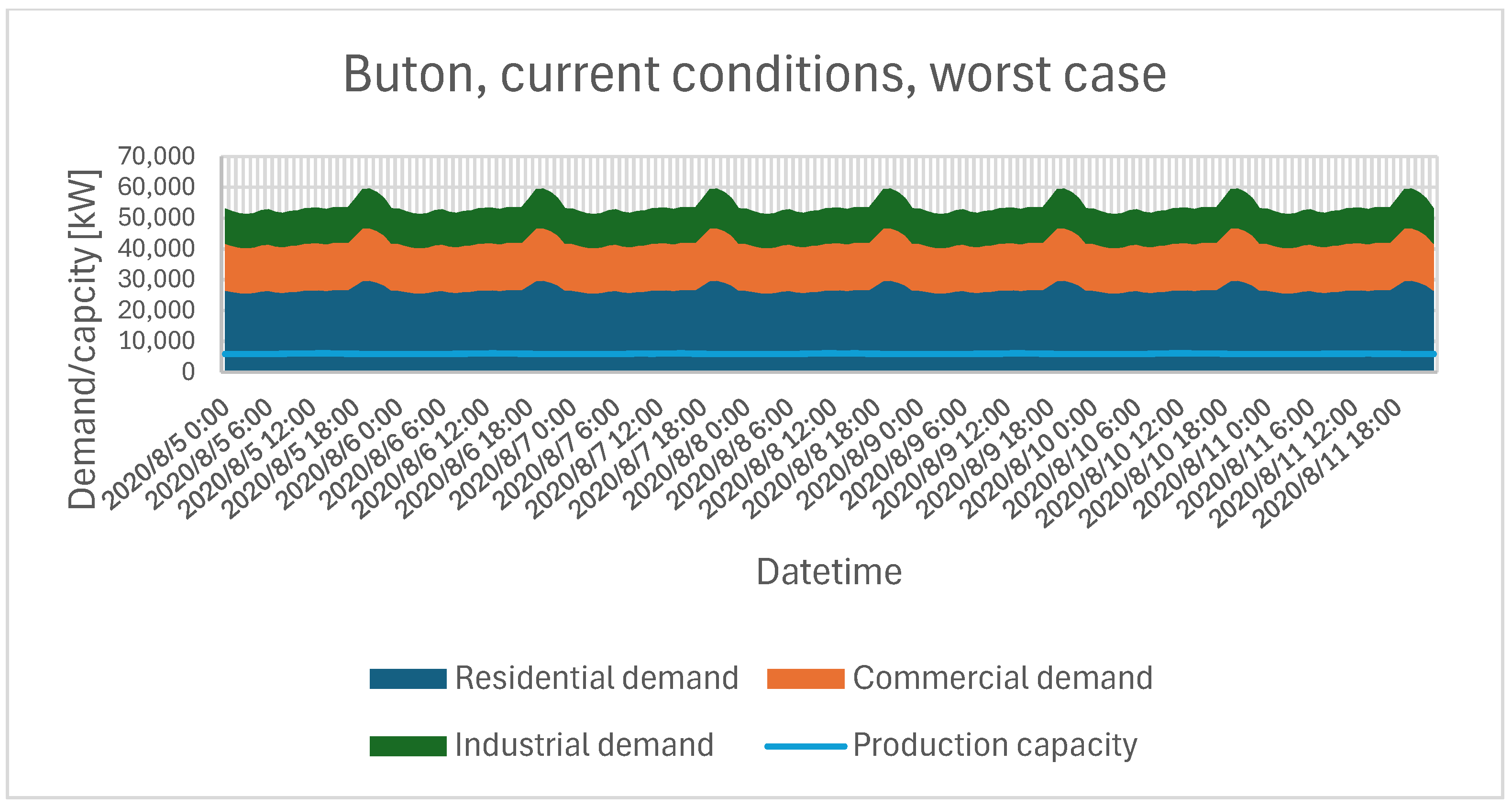
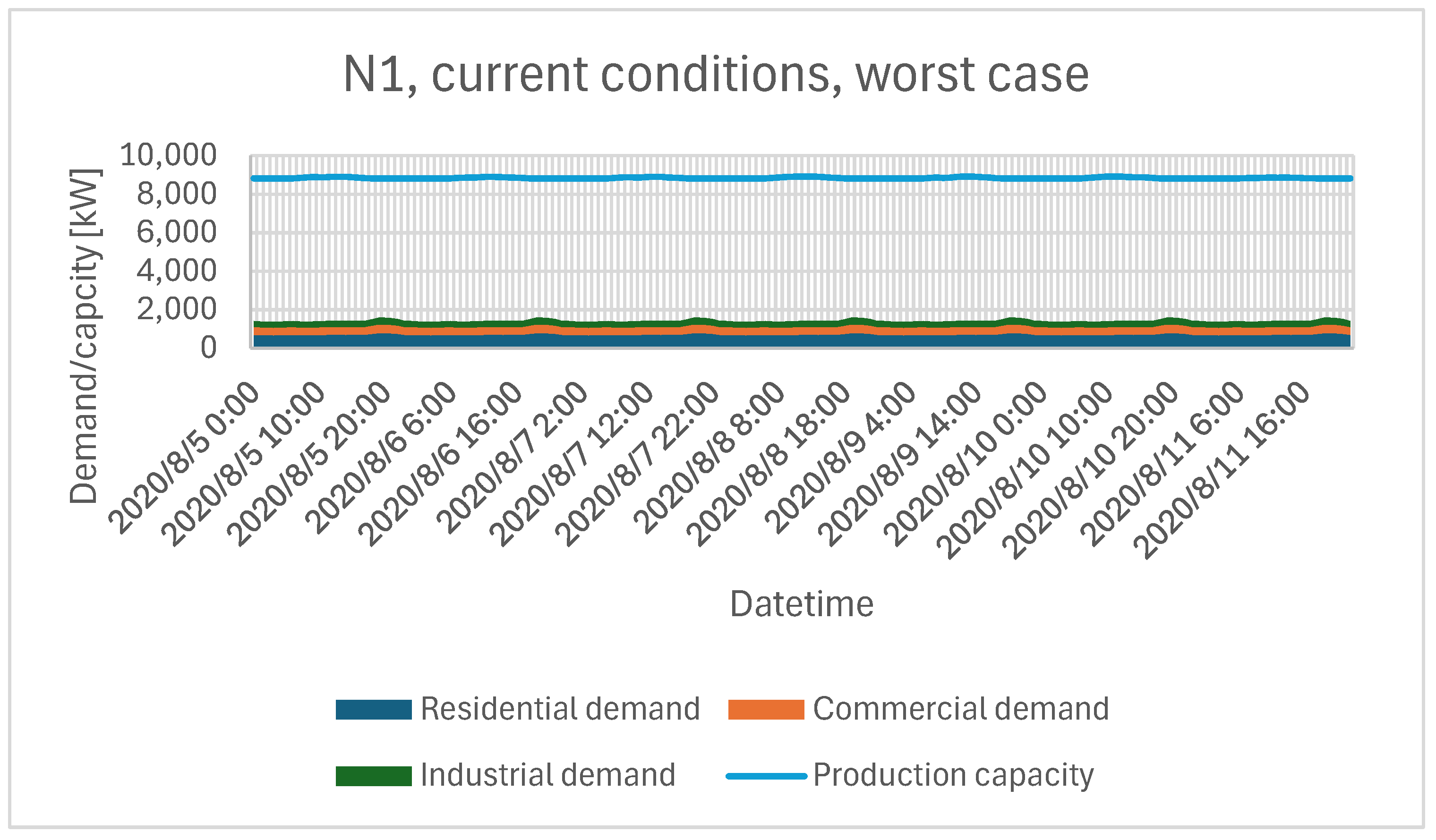
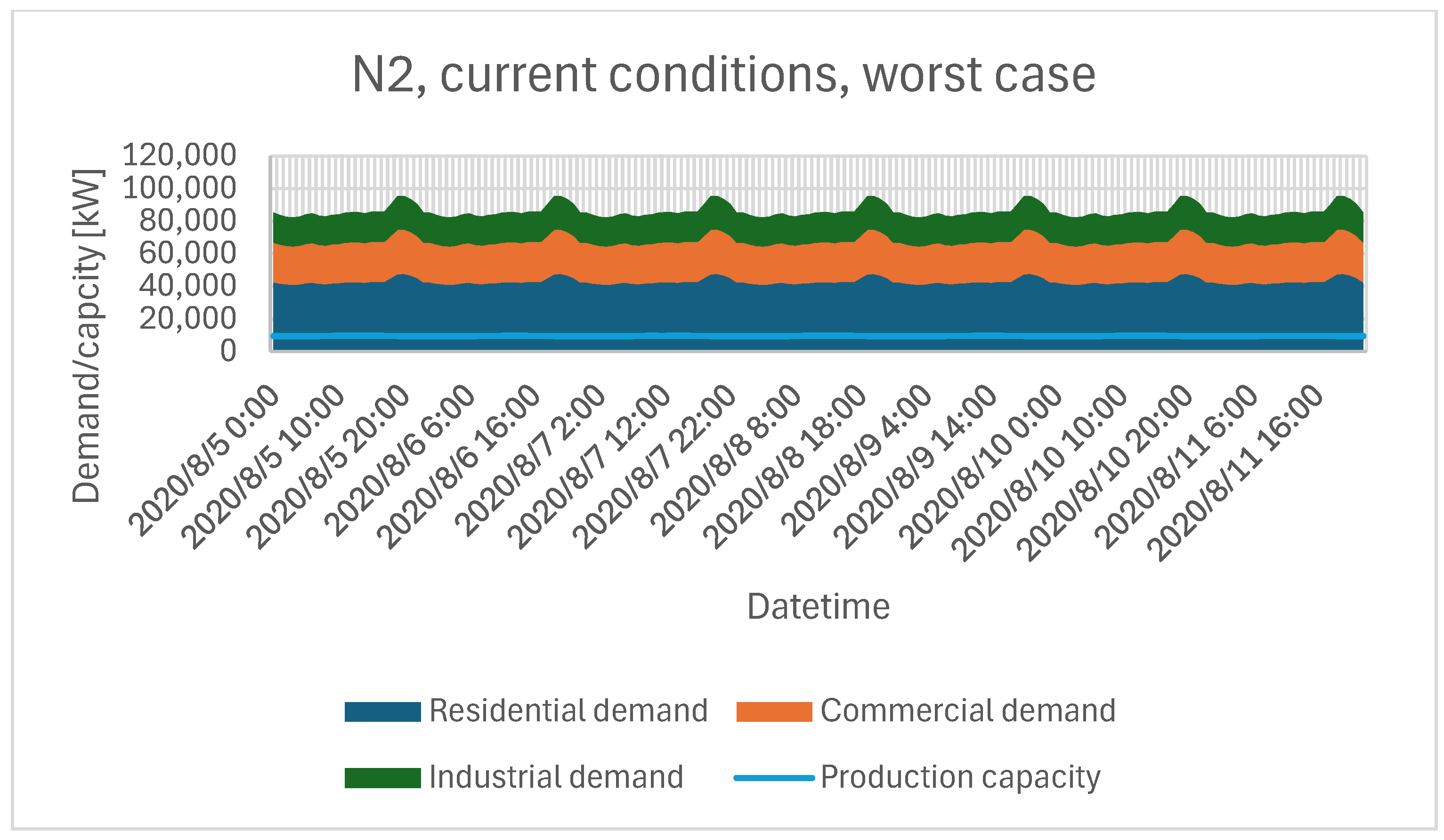
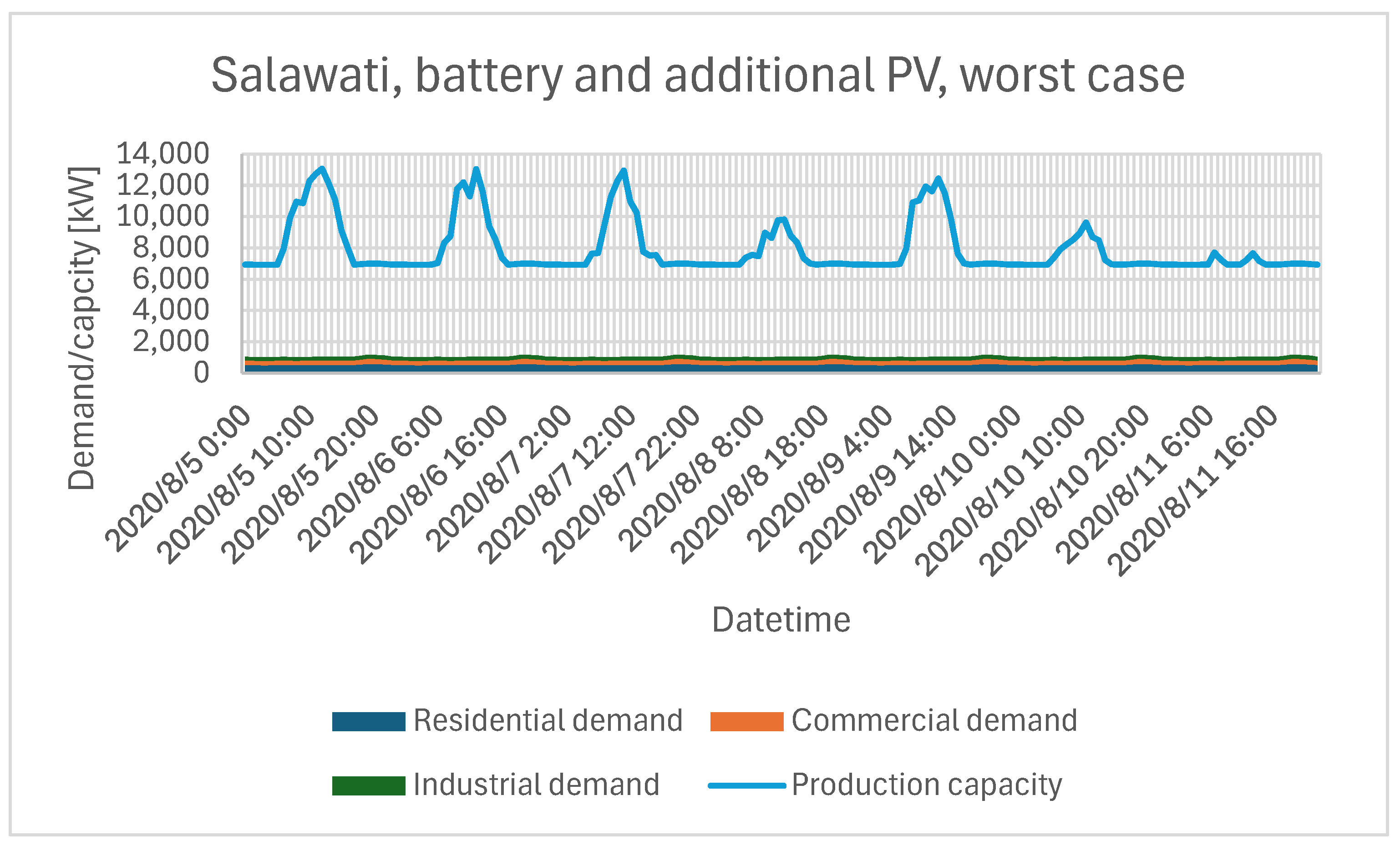
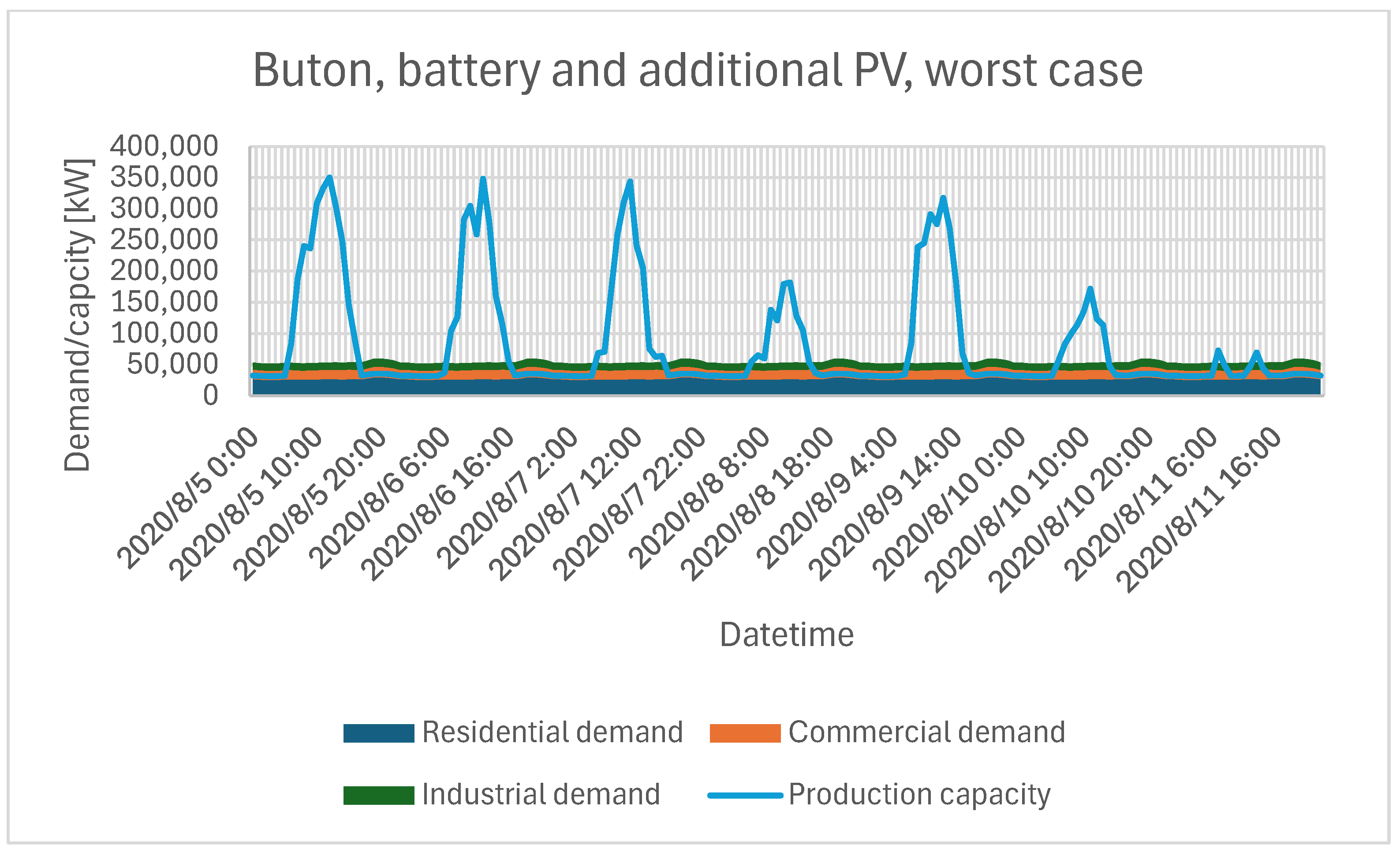


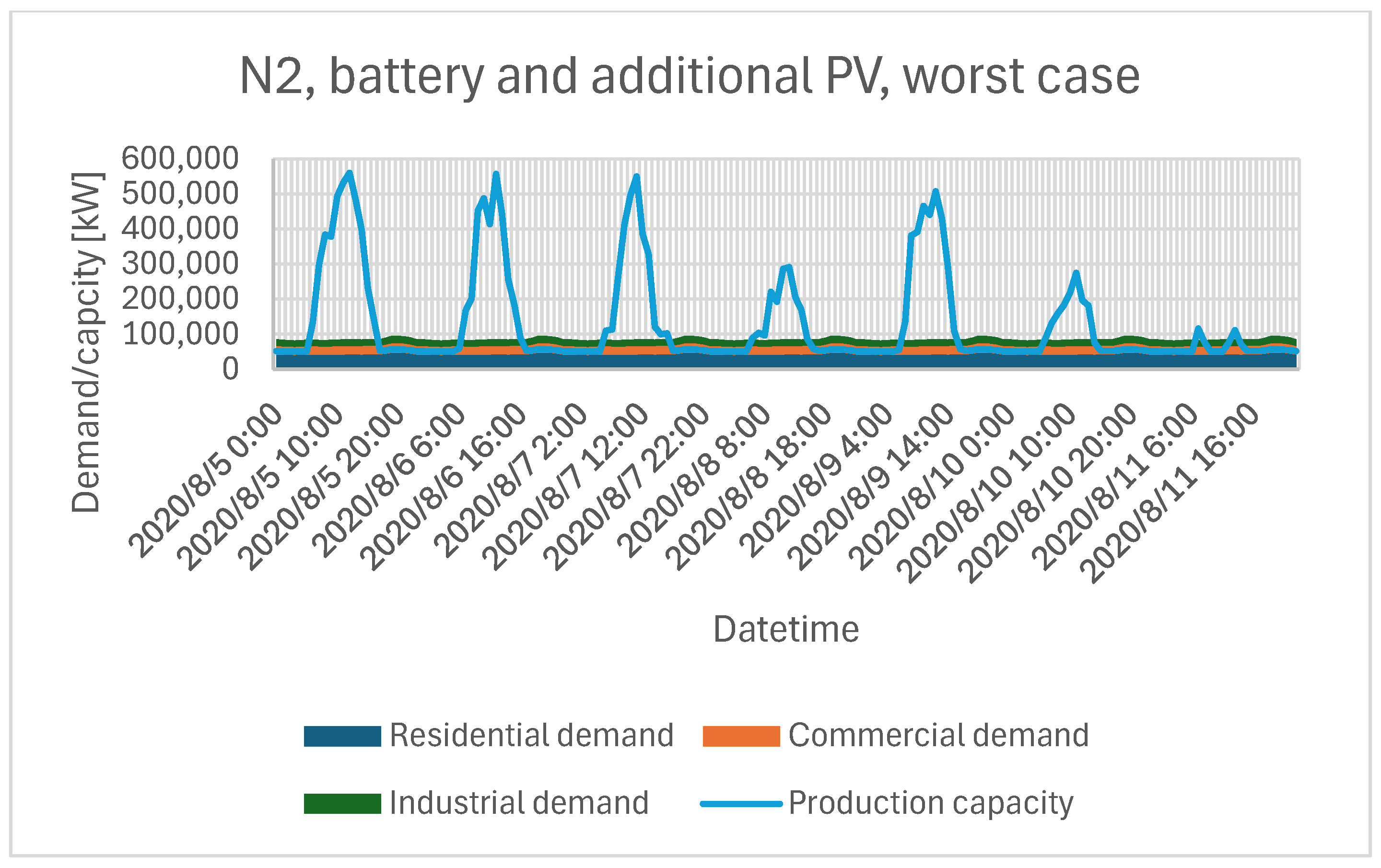
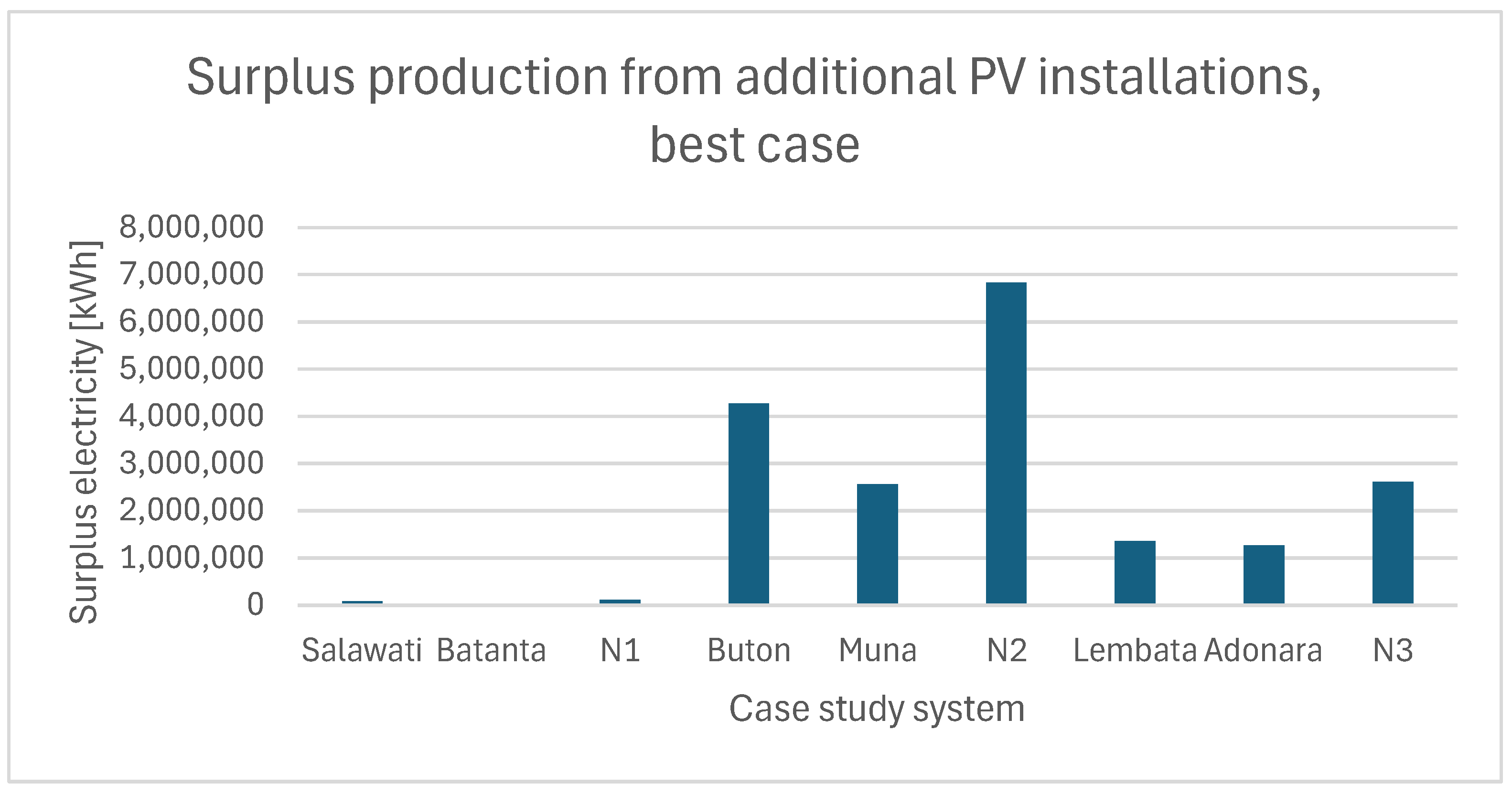
| Ref. | Main Objective | Approach/Method | Key Findings |
|---|---|---|---|
| [1] | Robust optimization in CCHP-based MG | Two-stage robust optimization; shared storage | Improves system’s risk resistance under uncertainties |
| [2] | Distributed robust optimization | ADMM-based robust scheduling | Minimizes operational costs under uncertain prices |
| [3] | DRO-based energy management in MMG | ATC + CCG with scenario generation | Decreases cost by ~2.98% compared with robust methods |
| [4] | Data-driven distributionally robust | Bi-level approach with ATC decomposition | Minimizes uncertainty in large-scale MG integration |
| [5] | Voltage/frequency control in MG cluster | Adaptive ANN-based approach | Real-time distributed solutions for stable operation |
| [6] | Adaptive load shedding for resilience | Real distribution system test with 2 MGs | Minimizes load drop, fosters reliability under faults |
| [7] | Multi-game energy trading | Stackelberg + cooperative game; robust model | Minimizes social costs while ensuring synergy |
| [8] | Distributed robust game for multi-MG | Subproblem decomposition + ADMM | Integrates ESS and DR to balance cost and risk |
| [9] | Decentralized multi-area MMS | MPC-based approach for normal and extreme ops | Enhances resilience in sub-regional microgrid clusters |
| [10] | Real-time coordinated scheduling | Multi-MG complementation; flexible supply side | Achieves stable ops and full integration of renewables |
| [11] | Lyapunov-based resilient control | Microgrid cluster stability analysis | Achieves voltage/power sharing under cyber-attacks |
| [12] | Adaptive load shedding in networked MG | Grid-friendly approach with embedded controls | Improves frequency response in dynamic MG conditions |
| [13] | Electricity-heat integrated storage | Bi-level optimization for multi-MG systems | Maximizes multi-agent profits and curtails system cost |
| [14] | Dual-hybrid fractional LFC approach | DR integration with advanced fractional control | Improves frequency stability in multi-MG environment |
| [15] | Multi-MG Stackelberg game operation | One-leader, multi-follower model; DR incentives | Enhances PV consumption and user incentives |
| [16] | High renewable integration in MG | GEP with renewable targets in Sulawesi | Demonstrates load–resource matching under constraints |
| [17] | Techno-economic DR in multi-MG | QARO approach with point estimation | Enhances reliability, cuts operational cost |
| [20] | Two-layer strategy for MG clusters | Layered MIQP; spinning reserve optimization | Reduces operational costs and emissions |
| [21] | Shared energy storage capacity | Two-level optimization; WOA-SOCP algorithm | Improves wind/solar utilization by up to 96.53% |
| [22] | Distributed robust DeePC voltage ctr | Data-enabled predictive control (DeePC) | Addresses voltage violation in NMG with uncertain DER |
| [23] | Hierarchical EMS for islanded NMG | Merit-order dispatch; cost minimization | Decreases cost by >36% in normal and abnormal modes |
| [24] | Scheduling in multi-MG alliance | Master-slave game with DR pricing | Reduces cost for both MG alliance and users |
| [25] | Stackelberg game in multi-MG system | Comprehensive DR model for scheduling | Balances upper-level MG aggregator, lower-level users |
| [26] | Multi-stage robust for shared storage | 4-layer optimization with scenario iteration | Increases reliability with minimal cost trade-off |
| [27] | Stochastic energy management | Battery/supercapacitor synergy; MILP model | Improves reliability; 7.5% cost reduction for MGs |
| [28] | Bi-level approach for multiple contingencies | MILP for gas-electric integrated system | Enhances power grid resilience with microgrid assets |
| [29] | Distributed hierarchical control | Back-to-back converters; layered approach | Improves MG consumption of distributed generation |
| [30] | Load DR strategy with hummingbird GA | Low-carbon dispatch with flexible clustering | Achieves cost reduction and carbon emission cuts |
| [31] | Multi-stage robust optimization | Min-max-max-min approach with scenario sets | Shared ESS lowers demand response and user costs |
| [32] | Stochastic multi-MG with DR and BESS | PEM + QARO approach for cost and reliability | Operating costs lowered, reliability index improved |
| [33] | Two-stage energy management with H2 | MSPBO approach with DR and hydrogen storage | Notable cost savings; peak load reduction improved |
| [34] | Probabilistic EM of multi-MG system | Various algorithms for cost optimization | BESS and HESS yield robust solutions and improved benefits |
| [35] | Day-ahead scheduling in multi-MG | Bi-level with HFCVs and EVPLs, robust approach | Decentralized model for data privacy and cost saving |
| [36] | Modified SPBO for multi-MG EM | Two-stage multi-objective optimization | Achieves better solution diversity and cost efficiency |
| [37] | Probabilistic EM with HESS and DR | PEM technique for load/RES uncertainties | DR effectively addresses peak demands in multi-MG |
| [38] | EV-based resilience enhancement | Two-stage approach with MG cluster synergy | Minimizes load shedding, ensures critical load supply |
| [39] | Distributionally robust islanded MG | Two-stage design/operation with scenario sets | Reduces mismatch with uncertain renewable generation |
| [40] | Multi-MG collaborative optimization | Distributed DR mechanism with transaction | Promotes cost savings and clean energy consumption |
| [41] | Adaptive neuro-fuzzy control for PQ | Proposed integrated cluster-level solution | Improves voltage stability and THD under high load |
| [42] | Bidirectional ANFIS for resilience | PV-wind-battery synergy; mode-specific control | Boosts reliability and dynamic performance in island MGs |
| [43] | NMG design for extreme conditions | Reconfiguration and dynamic islanding approach | Ensures faster system restoration in disasters |
| [44] | Multi-MG robust scheduling with VCG | Two-stage robust model with net load smoothing | Improves local new energy consumption, lowers cost |
| [45] | Collaborative tri-stage planning | Cooperative game + MG synergy | Gains in total cost minimization, improved flexibility |
| [46] | Distributed robust P2P multi-energy | TRO method + Nash bargaining | Achieves fair benefit distribution, improved synergy |
| [47] | EV-based robust multi-MG dispatch | Two-stage with KKT transformations, C and CG method | Achieves better load smoothing, cost reduction |
| [48] | Multi-energy multi-MG with carbon trade | Decentralized robust scheduling, Kalman filter | Attains low-carbon ops while ensuring data privacy |
| [49] | Adjustable robust scheduling with SESS | Introduction of parameter Γ for robust CTR | Decreases cost and energy reserve capacity effectively |
| [50] | Multi-MG trading with DR integration | Comparison of direct vs. intermediary modes | Direct trading yields higher benefits but lower self-sufficiency |
| [51] | Adaptive emergency approach for resilience | 3-stage approach; resilient operating zone | Ensures dynamic security post-event, prevents DER trip |
| [52] | Resilient DC MG cluster operation | Consensus-based approach; real-time digital sim | Maintains global economic operation, mitigates intrusions |
| [53] | Cyber-resilient control in DC MG | Model-independent detection + mitigation | Secures MG clusters from false data injection |
| [56] | mu-synthesis for MG LFC robust control | Virtual inertia controller design | Improves power damping in islanded MG clusters |
| [57] | Flexibility service with Stackelberg | Day-ahead ops for multi-MG aggregator | Increases synergy from microgrid-based ramping product |
| [58] | Adaptive genetic fuzzy double loop | Off-grid voltage stabilizing control | Achieves fast dynamic response, strong anti-disturbance |
| [59] | Reactive power management in NMG resilience | Two-stage model for islanded scenarios | Enhances stable ops in low-inertia MG clusters |
| [60] | Bilevel info-aware control in MG cluster | Resilient distributed approach with noise | Achieves robust load sharing under measurement errors |
| [61] | Robust secondary frequency control in VSM-based MG | Equivalent SG model with H∞ design | Provides distributed inertial support, improved frequency |
| Feature/Reference Range | Observations | Ref. |
|---|---|---|
| Prolonged Cable Outage | Most works concentrate on partial line outages; only a few investigate extended disruptions. | [6,9,28,38,59] |
| Resilience-Focused | Emphasis on robust or hierarchical schemes to handle worst-case events in islanded or NMG scenarios. | [1,2,3,11,28,38,51,59] |
| Shared Energy Storage | Improved resource utilization and cost-sharing; sizing complexities remain. | [1,21,26,33,34,49] |
| Demand Response | Integrates load-side flexibility, but magnitude of DR potential in island MGs is less explored. | [8,15,17,24,32,35] |
| Game-Theoretic Approach | Stackelberg and cooperative games are popular for distributed MG co-optimization. | [7,14,15,24,35,45] |
| Agent-Based Simulation | Typically combined with advanced or AI-based control, but less used in integrated resilience frameworks. | [12,14,41,42,46,52] |
| HOMER or Dedicated EMS Tools | Employed mainly for capacity planning; real-time synergy with multi-MG dispatch is still evolving. | [10,27,30,37,40] |
| System | Group | Population | Province | Province Total Population |
|---|---|---|---|---|
| Salawati | 1 | 8739 | UIW Papua and West Papua | 561,403 |
| Batanta | 1 | 3239 | ||
| N1 | 1 | 11,978 | ||
| Buton | 2 | 447,408 | UIW S, SE and W Sulawesi | 2,743,574 |
| Muna | 2 | 268,140 | ||
| N2 | 2 | 715,548 | ||
| Lembata | 3 | 141,400 | UIW East Nusa Tenggara | 5,569,068 |
| Adonara | 3 | 132,345 | ||
| N3 | 3 | 273,745 |
| Province | Solar [MWp] | Geothermal [MW] | Hydro [MW] | Steam [MW] | Diesel [MW] | DieselGas [MW] |
|---|---|---|---|---|---|---|
| UIW Papua and West Papua | 4.6 | 0.0 | 29.8 | 0.0 | 187.2 | 200.1 |
| UIW S, SE and W Sulawesi | 1.2 | 0.0 | 0.0 | 0.0 | 36.2 | 0.0 |
| UIW East Nusa Tenggara | 4.0 | 12.5 | 5.3 | 47.0 | 165.0 | 119.4 |
| System | Solar [kWp] | Geothermal [kW] | Hydro [kW] | Steam [kW] | Diesel [kW] | DieselGas [kW] |
|---|---|---|---|---|---|---|
| Salawati | 70.31 | 0 | 458.9 | 0 | 2879 | 3078 |
| Batanta | 26.37 | 0 | 172.1 | 0 | 1080 | 1154 |
| N1 | 96.70 | 0 | 631.0 | 0 | 3959 | 4233 |
| Buton | 197.3 | 0 | 0 | 0 | 5900 | 0 |
| Muna | 118.3 | 0 | 0 | 0 | 3536 | 0 |
| N2 | 315.6 | 0 | 0 | 0 | 9436 | 0 |
| Lembata | 101.1 | 317.4 | 134.1 | 1193 | 4190 | 3033 |
| Adonara | 94.62 | 297.2 | 125.5 | 1117 | 3923 | 2840 |
| N3 | 195.7 | 614.6 | 259.6 | 2311 | 8114 | 5872 |
| System | Best-Case Start Date | Best-Case Balance (MWh) | Worst-Case Start Date | Worst-Case Balance (MWh) |
|---|---|---|---|---|
| Salawati | 2020-12-02 | 991.7 | 2020-07-29 | 990.5 |
| Batanta | 2020-12-02 | 371.9 | 2020-07-29 | 371.5 |
| Buton | 2020-12-02 | −3627 | 2020-08-12 | −3631 |
| Muna | 2020-12-02 | −2174 | 2020-08-12 | −2176 |
| Lembata | 2020-12-02 | 32.12 | 2020-08-12 | 30.45 |
| Adonara | 2020-12-02 | 30.07 | 2020-08-12 | 28.51 |
| N1 | 2020-12-02 | 1364 | 2020-07-29 | 1362 |
| N2 | 2020-12-02 | −5801 | 2020-08-12 | −5806 |
| N3 | 2020-12-02 | 62.19 | 2020-08-12 | 58.97 |
| Scenario | Standalone Microgrid | Networked Microgrid |
|---|---|---|
| Best-Case (High Renewable Generation) | Evaluates an island microgrid under surplus conditions | Investigates resource sharing under high PV output |
| Worst-Case (Low Renewable Generation) | Evaluates an island microgrid under deficit conditions | Investigates resource sharing under poor PV output |
| Parameter | Value or Range | Notes |
|---|---|---|
| PV Output Variability | Hourly solar data from real measurements | Guides renewable output in best- vs. worst-case weeks |
| Battery Capacity | (Existing or Expanded) from HOMER Pro | Reflects either baseline or optimized sizing |
| State-of-Charge Constraints | 0–100% with set ramp rates | Ensures realistic storage operation |
| Demand Profiles | Residential, commercial, and industrial shares | Symbolic regression-based daily + seasonal variations |
| Disconnection Duration | 7 days | Represents a typical outage/recovery window |
| Interconnections | None or unlimited (standalone vs. networked) | Simplifies resource sharing but omits real line limits |
| Merit-Order Dispatch | Priority-based (residential > commercial > industrial) | Reduces load progressively under constrained supply |
| System | PV [kWp] | Battery [kWh] |
|---|---|---|
| Salawati | 8891 | 49,166 |
| Batanta | 3334 | 18,438 |
| N1 | 12,224 | 67,604 |
| Buton | 460,525 | 2,546,843 |
| Muna | 276,002 | 1,526,372 |
| N2 | 736,527 | 4,073,216 |
| Lembata | 145,546 | 804,911 |
| Adonara | 136,282 | 753,679 |
| N3 | 281,828 | 1,558,591 |
| Unmet Residential Demand [%] | Unmet Commercial Demand [%] | Unmet Industrial Demand [%] | ||||
|---|---|---|---|---|---|---|
| No PV/Battery | PV/Battery | No PV/Battery | PV/Battery | No PV/Battery | PV/Battery | |
| Salawati | 0.0 | 0.0 | 0.0 | 0.0 | 0.0 | 0.0 |
| Batanta | 0.0 | 0.0 | 0.0 | 0.0 | 0.0 | 0.0 |
| N1 | 0.0 | 0.0 | 0.0 | 0.0 | 0.0 | 0.0 |
| Buton | 77.8 | 0.0 | 100.0 | 46.7 | 100.0 | 77.1 |
| Muna | 77.8 | 0.0 | 100.0 | 46.7 | 100.0 | 77.1 |
| N2 | 77.8 | 0.0 | 100.0 | 46.7 | 100.0 | 77.1 |
| Lembata | 0.7 | 0.0 | 90.2 | 3.0 | 100.0 | 2.0 |
| Adonara | 0.7 | 0.0 | 90.2 | 3.0 | 100.0 | 2.0 |
| N3 | 0.7 | 0.0 | 90.2 | 3.0 | 100.0 | 2.0 |
| Unmet Residential Demand [%] | Unmet Commercial Demand [%] | Unmet Industrial Demand [%] | ||||
|---|---|---|---|---|---|---|
| No PV/Battery | PV/Battery | No PV/Battery | PV/Battery | No PV/Battery | PV/Battery | |
| Salawati | 0.0 | 0.0 | 0.0 | 0.0 | 0.0 | 0.0 |
| Batanta | 0.0 | 0.0 | 0.0 | 0.0 | 0.0 | 0.0 |
| N1 | 0.0 | 0.0 | 0.0 | 0.0 | 0.0 | 0.0 |
| Buton | 79.9 | 0.0 | 100.0 | 47.3 | 100.0 | 73.4 |
| Muna | 79.9 | 0.0 | 100.0 | 47.3 | 100.0 | 73.4 |
| N2 | 79.9 | 0.0 | 100.0 | 47.3 | 100.0 | 73.4 |
| Lembata | 4.6 | 0.0 | 100.0 | 0.0 | 100.0 | 10.3 |
| Adonara | 4.6 | 0.0 | 100.0 | 0.0 | 100.0 | 10.3 |
| N3 | 4.6 | 0.0 | 100.0 | 0.0 | 100.0 | 10.3 |
Disclaimer/Publisher’s Note: The statements, opinions and data contained in all publications are solely those of the individual author(s) and contributor(s) and not of MDPI and/or the editor(s). MDPI and/or the editor(s) disclaim responsibility for any injury to people or property resulting from any ideas, methods, instructions or products referred to in the content. |
© 2025 by the authors. Licensee MDPI, Basel, Switzerland. This article is an open access article distributed under the terms and conditions of the Creative Commons Attribution (CC BY) license (https://creativecommons.org/licenses/by/4.0/).
Share and Cite
Ma, Z.G.; Værbak, M.; Cong, L.; Billanes, J.D.; Jørgensen, B.N. Enhancing Island Energy Resilience: Optimized Networked Microgrids for Renewable Integration and Disaster Preparedness. Electronics 2025, 14, 2186. https://doi.org/10.3390/electronics14112186
Ma ZG, Værbak M, Cong L, Billanes JD, Jørgensen BN. Enhancing Island Energy Resilience: Optimized Networked Microgrids for Renewable Integration and Disaster Preparedness. Electronics. 2025; 14(11):2186. https://doi.org/10.3390/electronics14112186
Chicago/Turabian StyleMa, Zheng Grace, Magnus Værbak, Lu Cong, Joy Dalmacio Billanes, and Bo Nørregaard Jørgensen. 2025. "Enhancing Island Energy Resilience: Optimized Networked Microgrids for Renewable Integration and Disaster Preparedness" Electronics 14, no. 11: 2186. https://doi.org/10.3390/electronics14112186
APA StyleMa, Z. G., Værbak, M., Cong, L., Billanes, J. D., & Jørgensen, B. N. (2025). Enhancing Island Energy Resilience: Optimized Networked Microgrids for Renewable Integration and Disaster Preparedness. Electronics, 14(11), 2186. https://doi.org/10.3390/electronics14112186







